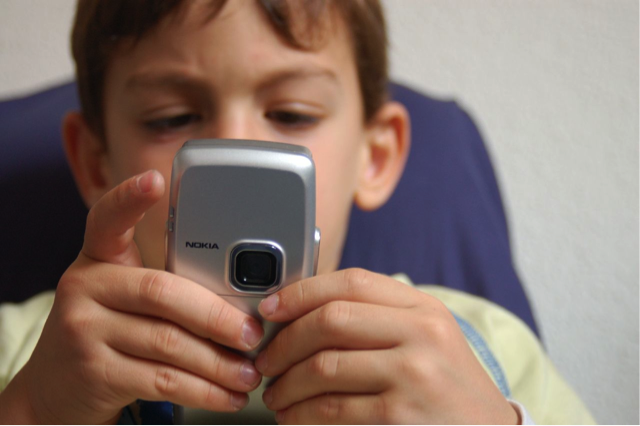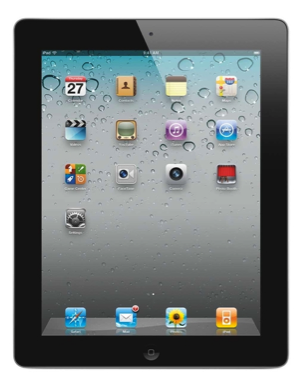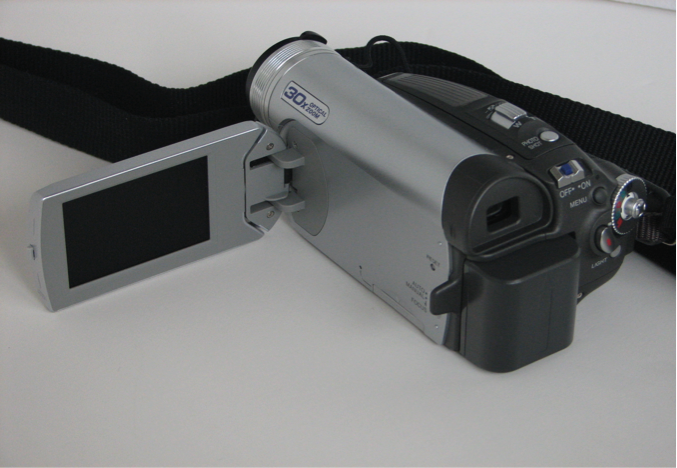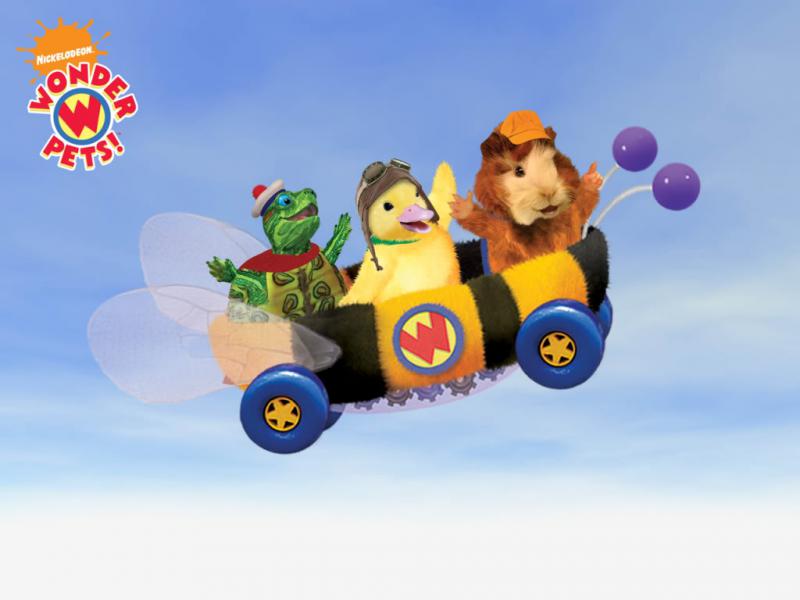Step 1 Planning
![]()

Step 1 for implementation of Video Modeling involves planning the intervention.
Step 1.1 Target the behavior
The first step in planning intervention is to identify and define the target behavior. This will also determine if video modeling is an appropriate intervention strategy to address the specific skills and behaviors you would like to target. Parents and practitioners should have a basic understanding of the targeted behavior and/or skill in order to determine if VM is appropriate. Understanding the behavior also will help the interventionist to specifically describe and define the behavior.
a) Identify and describe the skill or behavior
Review the toddler’s IFSP outcomes with the family and identify the priority target behavior or skill for intervention. VM has been found to be effective in changing many behaviors. However, the behavior or skill must be observable and measurable for monitoring whether or not the VM intervention is effective.
Behavior must be observable
Observable behaviors can be clearly defined and should be recognized by anyone who sees the young child in the setting where the behavior occurs. It is important to consider allowing someone who is not as familiar with the child to observe the child when identifying or defining a behavior (including how frequently the behavior occurs and the duration of the behavior). A neutral observer can help you determine how apparent the beahvior is and how frequent the targeted behavior occurs.
Examples of observable behaviors that can be defined in order to collect data:
- sharing
- initiating conversation or requesting
- responding to question
- playing with others
- completing tasks such as washing hands or brushing teeth
- exhibiting challenging behaviors or aggression (hitting, biting, scratching, pushing)
What are some examples of difficult behaviors to define or target?
Some behaviors may be observable but difficult to define. For example, “Mary will increase her social skills with peers,” is not defined adequately. This definition is vague and does not explain how or to what extent. A better definition may be, “Mary will initiate interactions with peers by saying, ‘Hi,’ at snack time and during circle time each day without prompting from adults.” In the second example, the target behavior is clearly identified. Initiating interactions is the action, while saying “Hi” is observable and can easily be quantified or calculated.
Examples of other behaviors that are difficult to define and collect accurate data on:
- shy
- happy
- sad
- angry
- crying
- tantrums
b) Define the behavior in measurable terms
Behavior must be measurable. A clearly defined behavior is important so that accurate data can be collected throughout the intervention process and the intervention’s effectiveness can be monitored (Sigafoos et al., 2007). Practitioners and parents need to consider where the targeted behavior occurs including its frequency and duration.
c) Create an observable and measurable IFSP outcome
Oftentimes, IFSP outcomes are not written in precise measurable terms and may need to be rewritten. Or the IFSP outcome may be stated in broad terms. This likely will require that smaller and more defined “steps” or objectives will need to be written so that progress toward achieving the broader outcome can be monitored.
EXAMPLE
Let’s return to our earlier example, “Mary will increase her social skills with peers,”
As was mentioned, this outcome is not particularly observable. One could ask what social skills would be increased? And increase from what baseline level?
It was suggested that a restatement such as Mary will initiate interactions with peers by saying, ‘Hi,’ at snack time and during circle time each day without prompting from adults. would be more observable. The social skill is define in terms of “saying hi” to peers at snack time and during circle time each day. This restatement also addresses the measurability of the outcome. To achieve this outcome the toddler would have to say “hi” to peers daily and without prompting during snack time and circle time.
When evaluating an IFSP outcome, it is useful to ask yourself whether or not another interventionist would know what is being targeted by reading the IFSP outcome statement without reading or knowing anything else about the child or family. This level of specificity in terms of observability and measurability is exactly what needs to be stated in the IFSP outcome or objectives.
Step 1.2 Simplify the task
Break the task into smaller skills
Now that you have described and defined the behavior in observable and measurable terms, it is important to ask yourself whether or not the skill or task is too large to be completed successfully by the child or whether breaking it down into smaller pieces or sub-tasks is useful. If so, you may want to complete a task analysis of the larger skill and model each part separately.
To identify steps for completing a specific task, ask yourself:
Does the task require multiple steps?
Can these steps be broken down into smaller more manageable tasks?
How can a task be simplified or broken down into smaller more reasonable steps?
Creating a task analysis of the skill that is being taught is very important for video modeling. A task analysis is helpful for breaking down a complex skill into a sequence of several behaviors (e.g., all the steps in learning how to wash hands). It should include a list of all of the steps needed to complete the target behavior.
EXAMPLES OF TASKS THAT MAY REQUIRE
SMALLER STEPS AND MORE VIDEO EXAMPLES
- Teaching a toddler to independently brush his/her teeth may need multiple video segments
- Putting on a coat
- Setting the table for snack
- Washing hands
Example of a Task AnalysisWashing hands could be broken down into smaller skills to facilitate learning. It may be helpful to create a chart using these smaller steps so that you can record (monitor progress) as it occurs/when they are accomplished. The basic idea of a task analysis is to determine how many or what steps are required to complete a task. Steps/Skills for Washing Hands Step 1 Turn on water Step 2 Wet hand Step 3 Apply soap Step 4 Rub hands together Step 5 Rinse hands Step 6 Dry hands |
Step 1.3 Select reinforcers
Select reinforcers to pair with the target skill or behavior
Reinforcement helps to increase the likelihood that a targeted behavior or skill will reoccur once the reinforcer is paired with the desired outcome (see the Reinforcement Learning Module). For toddlers, reinforcers may consist of the child’s favorite toy, snack, or activity. When selecting a reinforcer, it is important to include parents whenever possible to help choose items that can be used in multiple settings (i.e., home, daycare center). Additionally, several items should be identified in the event that one item loses its’ effectiveness as a reiforcer or the toddler demonstrates a shorter than normal attention span with desired items (Rush, Mortenson, & Birch, 2010).
 Video: Using Reinforcement
Video: Using Reinforcement
a) Identify highly motivating positive reinforcers
Ask the parent to help you identify favorite toys, activities, food, etc. that would be highly motivating as a reinforcer. If there is some uncertainty, the provider may need to conduct a brief preference assessment to determine what are some highly preferred items a child might select. At least two items should be identified to be used as positive reinforcment.
|
Steps for Selecting a Toy as a Positive Reinforcer
|
Th following video gives an example of a provider conducting a preference assessment:
 Video: Reinforcer Sampling for Video Modeling
Video: Reinforcer Sampling for Video Modeling
b) Select several items, activities that are highly modivating for the toddler to use as positive reinforcers during skill acquisition
You may find that one reinforcer works quite well all the time; however, often when one reinforcer is used repeatedly the toddler becomes satiated and no longer motivated by its use. Having the second reinforcer identified and available may save time and not interrupt the flow of skill acquisition.
Refer to the Reinforcement Module for additional information.
Step 1.4 Choose the video equipment
There are three specific equipment functions that are needed to execute a VM intervention. Parents and practitioners will need equipment to Record the behavior or skill, Edit the video once it is recorded, and provide a device for the toddler to View the video model intervention.
a) Select the equipment (video camera and video playback device)
Videos can be created using a variety of equipment. With the increased affordability of electronic devices like laptop computers, smart phones, digital cameras, tablets, and iPads, the creation of videos has become accessible to many individuals. Video editing software may be required depending on the format of the video recording (MP-4, iMovie, etc.). Where the VM intervention occurs (e.g., center or home) may also determine the accessibility of various types of equipment. It may help to answer the following questions when selecting the equipment.
- What equipment do I need or have (see equipment function checklist below)?
- Does the equipment I have meet the specific function to:
-
Record
-
View
-
Edit
b) Become familiar with the equipment
There are several types of equipment that can be used to create a video. It is important that the user (parent, child care staff) is familiar with the equipment and is comfortable with the equipment features. Users should practice using all equipment before recording the video modeling intervention. This will save time and ensure that the recording can be completed in a timely way.


Videos can be created by using any number of recording devices including:
- traditional video cameras
- hand-held or micro video cameras
- digital cameras
- smartphones
- tablet cameras
 Some devices can record and play back videos. We recommend viewing videos on devices such as computers, iPads, or tablets to maximize the viewing area (screen size). For example, small hand held recorders have a small screen for viewing the video as it is recorded but is not ideal for showing the VM to the toddler.
Some devices can record and play back videos. We recommend viewing videos on devices such as computers, iPads, or tablets to maximize the viewing area (screen size). For example, small hand held recorders have a small screen for viewing the video as it is recorded but is not ideal for showing the VM to the toddler.
Unlike recording the video, multiple devices can be used to show videos. Consider the availability of the display devise in the environment in which you will show the toddler the video model (what is available or does something need to be purchased), the portability of the display devise (e.g., for use outside, inside the home, in a child care center), and quality and size of the display (e.g., can the toddler view the video model without difficulty, is the quality of the video adequate). Some devises include:
- TV with a Digital Video Disk (DVD)
- computer with a video player (e.g., Real Player, Apple Quick Time Player, Windows Media Player)
- iPad or Tablet
- smartphone (not ideal as it is too small)
|
Equipment Function Checklist |
||
Purpose |
Equipment |
Have (H) orNeed (N) |
|
Record |
|
H |
|
View Playback/viewing devices |
Viewing equipment types
|
H |
|
Edit |
|
N |
Step 1.5 Create the model and record the video
Now that we have identified the equipment needed to record the video and have practiced with the equipment, the actual video needs to be planned. The finished product (the video model) is your intervention; therefore, attention to the selection of the model, preparation of the model, and arrangement of the environment are critical planning features.
a) Identify and prepare the model
As previously discussed, there are different models who can be included in VM. However, we will only address basic video modeling— adult in this module. Remember, in a basic VM intervention the targeted behavior in the video is demonstrated by a peer or an adult. Here are some suggestions to consider:
- Determine the behavior.
- Make sure the targeted behavior or skill can be modeled by the adult or peer.
- If a peer is not available, the parent, a sibling, or another adult can model the behavior.
- Decide whether or not a script will increase the likelihood of a successful recording.
- Determine who will appear in the video model. If a peer, one of the same age is ideal.
Select the Model
Selecting the model is an important step when creating the video. There are several individuals that should be considered including parents, grandparents, or providers (childcare providers, early intervention providers). Older siblings, such as brothers or sisters, are also great individuals to demonstrate specific tasks. However, the first choice should be the parent if they are comfortable with helping to create the video. If parents feel uncomfortable in this role, the early intervention provider can serve as the model for the first video, then as the parent(s) get comfortable they can be supported to assume this role.
Prepare the model
Give the model time to practice the skill. It is likely that additional practice may be required if the model will be using a script or demonstrating a specific skill using items such as toys or puzzles. Remember, the video model (peer or adult) should be able to easily demonstrate the target skill appropriately for the toddler who will watch the video.
Consider using a script
A script tells the model what they need to say or do during the taping process. For example, when developing a basic VM for young children or toddlers, the peer or adult model may need some assistance to remember what to say during the taping. Scripted responses or verbal behavior may be used to increase the likelihood of video recording appropriately modeled behavior. Scripts should be developed before the video taping process and can be rehearsed a few times prior to the actual recording.
Since peers or toddlers may have limited language development, scripted statements can consist of two or three words phrases.
EXAMPLES
“my turn”
“clean up”
“bed time”
b) Arrange the environment for recording the video
The adult who is recording the video should arrange the environment so that the model can successfully and clearly demonstrate the targeted behavior. Arranging the environment involves:
- setting up the camera
- arranging the room or designated space
- organizing toys or other necessary items to demonstrate the task
- minimize distractions
The video recording should take place in the most natural setting. It is important to use the equipment during the recording that will be used during the intervention by the targeted child. Remember to setup the camera in an ideal location to capture the targeted skill or behavior being performed so that the toddler can clearly see the steps. If audio is required for the video modeling intervention, test out the recording equipment beforehand to make certain it can capture the audio clearly. If it cannot, you may need to consider adding an external microphone. Also double check to make certain the microphone function on the recording equipment is turned on.
c) Record the video
Now that everything is in place, it is time to record the video. Videos can range in length depending on the skill or behavior targeted. An ideal length is approximately 2-3 minutes therefore the initial recording should be 3-4 minutes to allow for editing. Here are some additional suggestions to consider when creating the video:
- Practice once before recording
- Review the script or steps of the task analysis
- If possible, use a tripod to stabilize the video recording devise
-
Start the recording a few seconds (10-15 seconds) before demonstration of behavior
Check the video’s accuracy by answering the following questions:
- Did the video demonstrate the skill or behavior that is targeted?
- Were all the steps demonstrated (task analysis)?
- Can the model be easily and clearly heard?
- Is the video appropriate in length?
d) Edit the video
Once the video is recorded take a moment to review what has been recorded. The video may need to be edited to remove any errors, particularly removing prompts or added cues (beyond naturally occurring cues). First, try to determine if there is anything that will take away from the focal point of the video, which is an accurate model of the desired behavior or skill.
Video editing can be difficult for novices depending on the video format and their technical experience. If editing is too difficult, seek assistance from a more experienced individual or identity a self-help tutorial that may be available on-line.
e) Add additional features (optional)
Two additional features can be added to increase the likelihood of successfully learning the modeled behavior viewed on the video.
- captions, titles, or headlines (only useful for readers)
- voice-overs
Voice-overs may be used to further support the video and increase learner comprehension (Sigafoos et al., 2007). Voice-overs might include narration of the steps (e.g., “I wait in line. I use a spoon to take the food I want to eat.”), or to describe the target behavior (e.g., child picking up toys). Doing voice-overs requires additional time for recording and editing, then applying it to the video intervention. So, consider whether or not voice-overs are really necessary.
f) Upload (transfer) the video to a viewing device
Once the video is created and edited, it must be available to the young child so that he/she can watch the video (Sigafoos et al., 2007). Picking the right device is based on resources that are available. Remember, some devices and software are not compatible or the video may be difficult to transfer or play from one device to another (e.g., recording with Apple brand devices may not load on to PC-based devices).
After transferring the video to the viewing device, check to make sure the video plays successfully.
The table below shows some situations that may occur after uploading the video. If a problem persists after several attempts to work through the solutions listed below, consulting with a more experienced individual may help.
TROUBLE SHOOTING VIDEOS
Problem |
Possible Solution |
|
Are you unable to upload the video to your viewing device? |
Check to make sure that the video file is compatible with the software you are using. |
|
The video volume is too low or there is NO sound. |
Check the volume on your device. |
|
Are you having problems editing the video? |
Check to see if your video editing software supports the video format. |
Step 1.6 Determine the baseline
a) Select a data collection method
Collecting appropriate data is important to increase the likelihood of successful implementation of VM. For example, to increase (or decrease) a behavior, data needs to be collected to determine how often the behavior occurs initially (baseline). Therefore, as part of the planning process, you must consider your data collecting method.
Here is an example of data collecting and recording on a simple chart. The chart identifies the days of the week and the frequency the behavior (i.e., toddler leaving their seat) was observed. Using this example, the frequency (or total within a given period of time, in the case below per day) of the behavior can be easily collected.
|
Days |
Out of Seat |
Total |
|
Monday |
✓✓✓✓✓✓✓✓✓
|
9 |
|
Tuesday |
✓✓✓✓✓✓✓✓✓✓✓✓✓✓✓✓
|
16 |
|
Wednesday |
✓✓✓✓✓✓✓✓✓✓✓✓✓
|
13 |
|
Thursday |
✓✓✓✓✓✓✓✓✓✓✓✓✓✓✓✓✓
|
17 |
|
Friday |
✓✓✓✓✓✓✓✓✓✓✓✓
|
12 |
This table can easily be expanded to collect more than one behavior or more than one toddler.
b) Collect baseline data
Once the target behavior and data collection methods are identified, the next step is to start collecting baseline data.
EXAMPLE
NOT picking up and putting away toys after play
NOT waiting to take turns
NOT staying (at the table) seated during activity
A clearly defined behavior might be “Nigel will help others pick up and put away toys after play.”
Notice how behavior is defined. Picking up and putting away toys is an observable task and should not require additional descriptors to determine the mastery of the task. Either Nigel did or did not help pick up and put away toys after play activity, given that he does understand what is meant by picking up and putting away toys. If there is some difficulty with completing the task, the quantity of toys or the amount of support that is required to successfully complete the task can be counted.
During baseline, Nigel does not assist in picking up and putting away the toys after play activity.
This is observed for five consecutive days or activities. The level of support that is needed might also be determined before baseline data is collected.
EXAMPLES
Nigel will assist in picking up and putting away toys only when physically prompted by an adult (measure of amount of support needed). or
Nigel will assist peers in picking up and putting away 3-4 toys after play activity.
In this example, the number (quantity) of toys is important. If Nigel picks up one toy, he has not mastered the skill.
It is important to understand skills that toddlers may already have or how much of the target skill/behavior they can do at baseline. This information will assist you in setting clear expectations for improvement or completing of the task.
 Video: Baseline Level of Performance -
Video: Baseline Level of Performance -
Completion of Puzzle
Step 1.7 Introduce viewing equipment to the toddler
In many cases toddlers may be familiar and have used laptop computers and/or tablets for viewing favorite cartoons or other videos. This needs to be assessed, not assumed.
When introducing the toddler to the video process that will be followed when watching the video model, it is important to use the same steps (Sigafoos et al., 2007). This will allow you to introduce the VM viewing device into the young child’s routine.
If the VM that will be viewed by the young child is 2 minutes long, you should provide a two minute long video of something else (i.e., short clip from favorite TV program) for the child to access when introducing the viewing process.
Non-VM videos may include a child’s favorite TV program such as:
-
Kipper (available on Sprout and Netflix)


- Wonder Pets! (available on Nick Jr. and Netflix)
- Blue's Clues (available on Nick Jr. and Netflix)
- Doc McStuffins (available on Disney Junior)
- Curious George (available on PBS Kids and Netflix)
It is recommended that you not allow toddlers to play games during this time because a short amount of time game-playing may make it difficult to transition to the actual VM viewing. This may cause or reinforce undesired (negative) behaviors.
Practice Scenarios: Planning Video Modeling
Review the Troubleshooting Tips if you are having trouble viewing.
Knowledge Check

Question:
What are some key steps when planning a video modeling?
Question:
Why are task analyses helpful when targeting specific skills or behaviors?
Question:
What are three key functions of equipment needed to complete to create a video model?
Question:
Why is arranging the environment an important step to recording the video?
Question:
What should you do if you are having difficulties with transferring the video from one device to another?
Question:
Why should you determine how often a behavior initially occurs?


